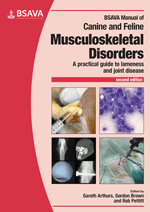
Full text loading...

Problems affecting bone growth and development are caused by abnormalities of cartilage formation, cartilage transformation, or bone formation. This chapter covers angular limb deformities and bone dysplasias in depth. Operative Techniques: Distal ulnar osteotomy/segmental ostectomy; Radial and ulnar corrective osteotomies; Dynamic lengthening of the radius using an external skeletal fixator; Tibial osteotomy for tarsal varus or valgus.
Disturbances of growth and bone development, Page 1 of 1
< Previous page | Next page > /docserver/preview/fulltext/10.22233/9781910443286/9781910443286.8-1.gif

Full text loading...



































